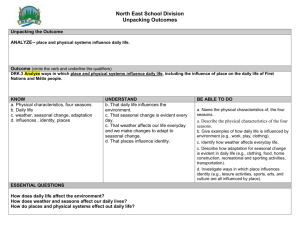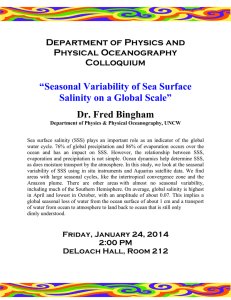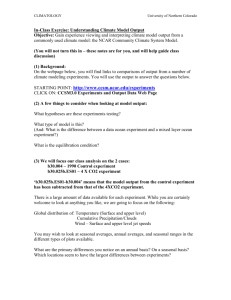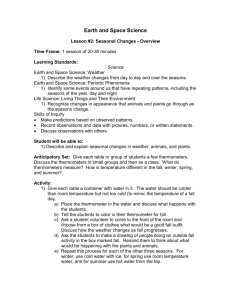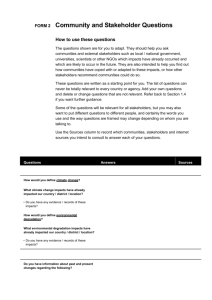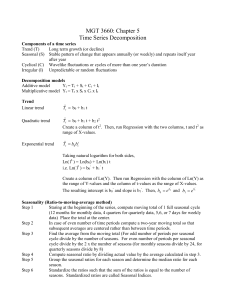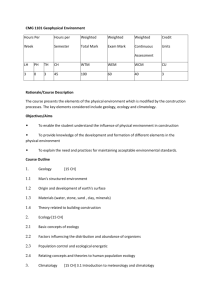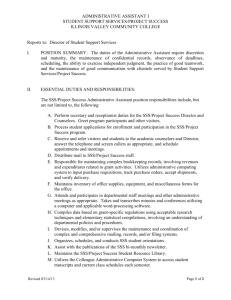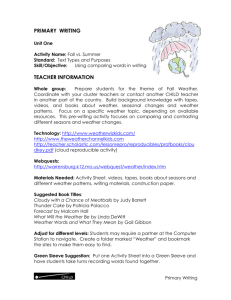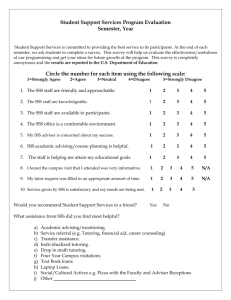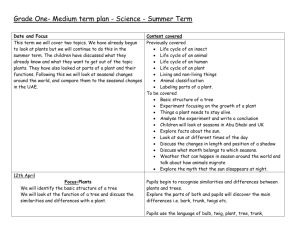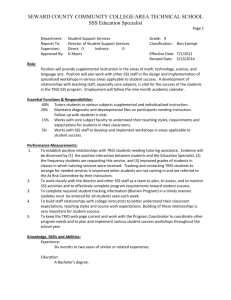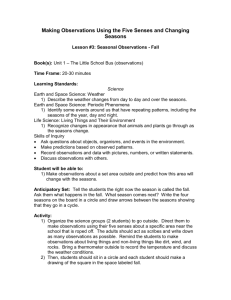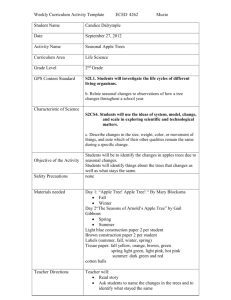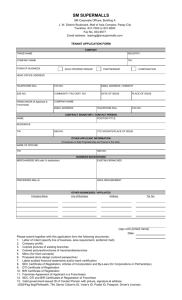Monitoring the coastal currents by satellite altimetry: a case
advertisement
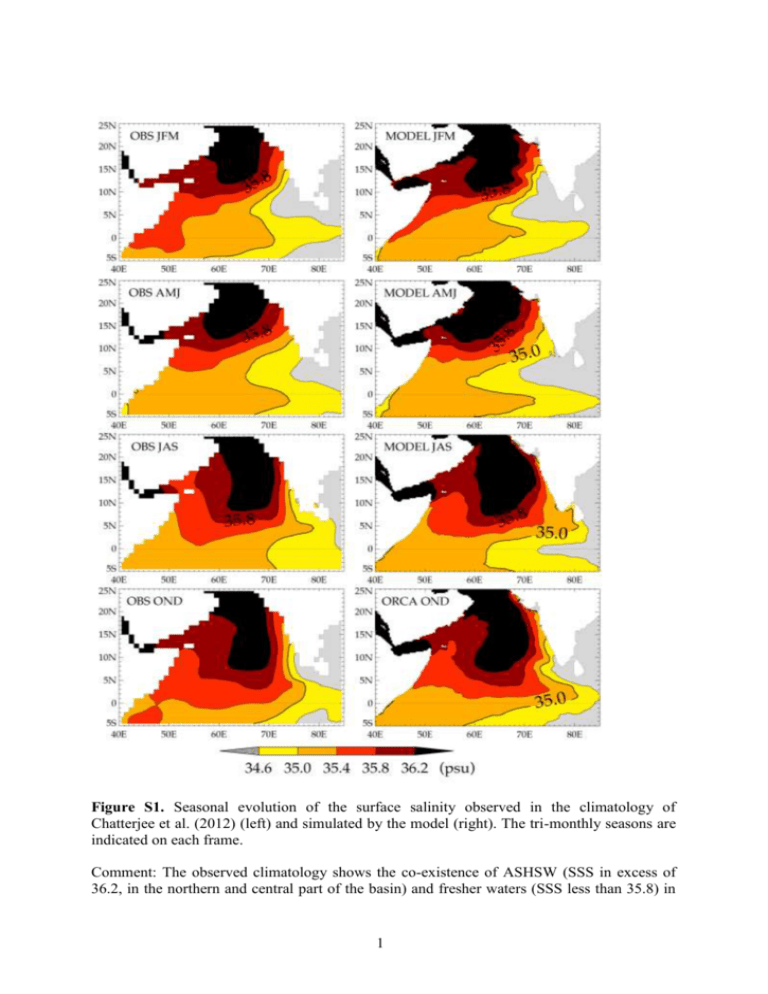
Figure S1. Seasonal evolution of the surface salinity observed in the climatology of Chatterjee et al. (2012) (left) and simulated by the model (right). The tri-monthly seasons are indicated on each frame. Comment: The observed climatology shows the co-existence of ASHSW (SSS in excess of 36.2, in the northern and central part of the basin) and fresher waters (SSS less than 35.8) in 1 the equatorial region, as well as on both eastern and western boundaries. This contrast is seen in all seasons, although with a modulation. The salty tongue progresses southward in the central basin (between 60°E and 70°E) from spring to summer, and retreats back northward from fall to winter. On the western boundary, the limits between the two water masses oscillates between a northernmost position in summer, and a southernmost position in fall and winter. The model reproduces adequately the observed patterns throughout the seasonal cycle, with little departures from the observations. 2
